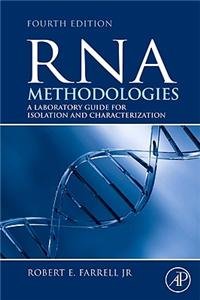Only logged in customers who have purchased this product may leave a review.
Sale!
The Biology of Peatlands, 2e (Hardback) | Released: 15 Sep 2013
By: Heakan Rydin (Author) Publisher: Oxford University Press, USA33.00% Off Original price was: 11,761.00$.7,880.00$Current price is: 7,880.00$.
You save 3,881.00$
Peatlands form important landscape elements in many parts of the world and play significant roles for biodiversity and global carbon balance. This new edition has been fully revised and updated, documenting the latest advances in areas such as microbial processes and relations between biological processes and hydrology. As well as... Read More
In stock
Ships within 1-2 Business Days

100% Orginal Books

Easy Replacement

Certified product

Secure Checkout

On time delivery
Author:
![]()
Heakan Rydin
Publisher Name:
![]()
Oxford University Press, USA
Language:
![]()
English
Binding:
![]()
(Hardback)
About The Book
Peatlands form important landscape elements in many parts of the world and play significant roles for biodiversity and global carbon balance. This new edition has been fully revised and updated, documenting the latest advances in areas such as microbial processes and relations between biological processes and hydrology. As well as thoroughly referencing the latest research, the authors expose a rich older literature where an immense repository of natural history has accumulated. The Biology of Peatlands starts with an overview of the main peatland types (marsh, swamp, fen, and bog), before examining the entire range of biota present (microbes, invertebrates, plants, and vertebrates), together with their specific adaptations to peatland habitats. Detailed coverage is devoted to the genus Sphagnum, the most important functional plant group in northern peatlands, although tropical and southern hemisphere peatlands are also covered. Throughout the book the interactions between organisms and environmental conditions (especially wetness, availability of oxygen, and pH) are emphasized, with chapters on the physical and chemical characteristics of peat, the role of peat as an archive of past vegetation and climate, and peatland succession and development. Several other key factors and processes are then examined, including hydrology and nutrient cycling. The fascinating peatland landforms in different parts of the world are described, together with theories on howthey have developed. Human interactions with peatlands are considered in terms of management, conservation, and restoration. A final chapter, new to this edition, focuses on the role of peatlands as sources or sinks for the greenhouse gases carbon dioxide and methane, and the influences of climate change on peatlands. This timely and accessible text is suitable for students and researchers of peatland ecology, as well as providing an authoritative overview for professional ecologists and conservation biologists.About the Author: Hakan Rydin, Department of Plant Ecology and Evolution, Uppsala University, John K. Jeglum, Department of Forest Ecology, Swedish University of Agricultural Sciences Hakan Rydin is a Professor in Plant Ecology at Uppsala University, where he teaches ecology courses. His research focusses on the ecology of peatlands and the biology of bryophytes, both in peatlands and in other ecosystems. Over the years he has used peatlands to discuss ecological topics such as plant community structure, succession, and vegetation dynamics. His studies on the peat mosses (Sphagnum) cover ecophysiology, competition, niche relations, and dispersal. In more applied projects, he has dealt with the effects of nitrogen deposition and increased levels of carbon dioxide on mire ecosystems across Europe, and also worked with experiments on the restoration of drained peatlands. John Jeglum is a retired Professor in Forest Peatland Science at the Swedish University of Agricultural Sciences in Umea, where he taught wetland ecology and peatland forestry. His research deals with forest and peatland succession, and GIS analysis of peatland distribution in relation to state factors. Previously, he was a Research Scientist with the Canadian Forest Service in Sault Ste. Marie, Ontario. His projects included wetland and forest ecosystem classification, multivariate analysis of ecological data, natural regeneration of black spruce (Picea mariana) by strip clearcutting, forest drainage, and best forestry practices. He has studied peatlands in Canada (Saskatchewan, Ontario, Hudson-James Bay Lowlands), Sweden, Finland, and Ireland.










Reviews
There are no reviews yet.